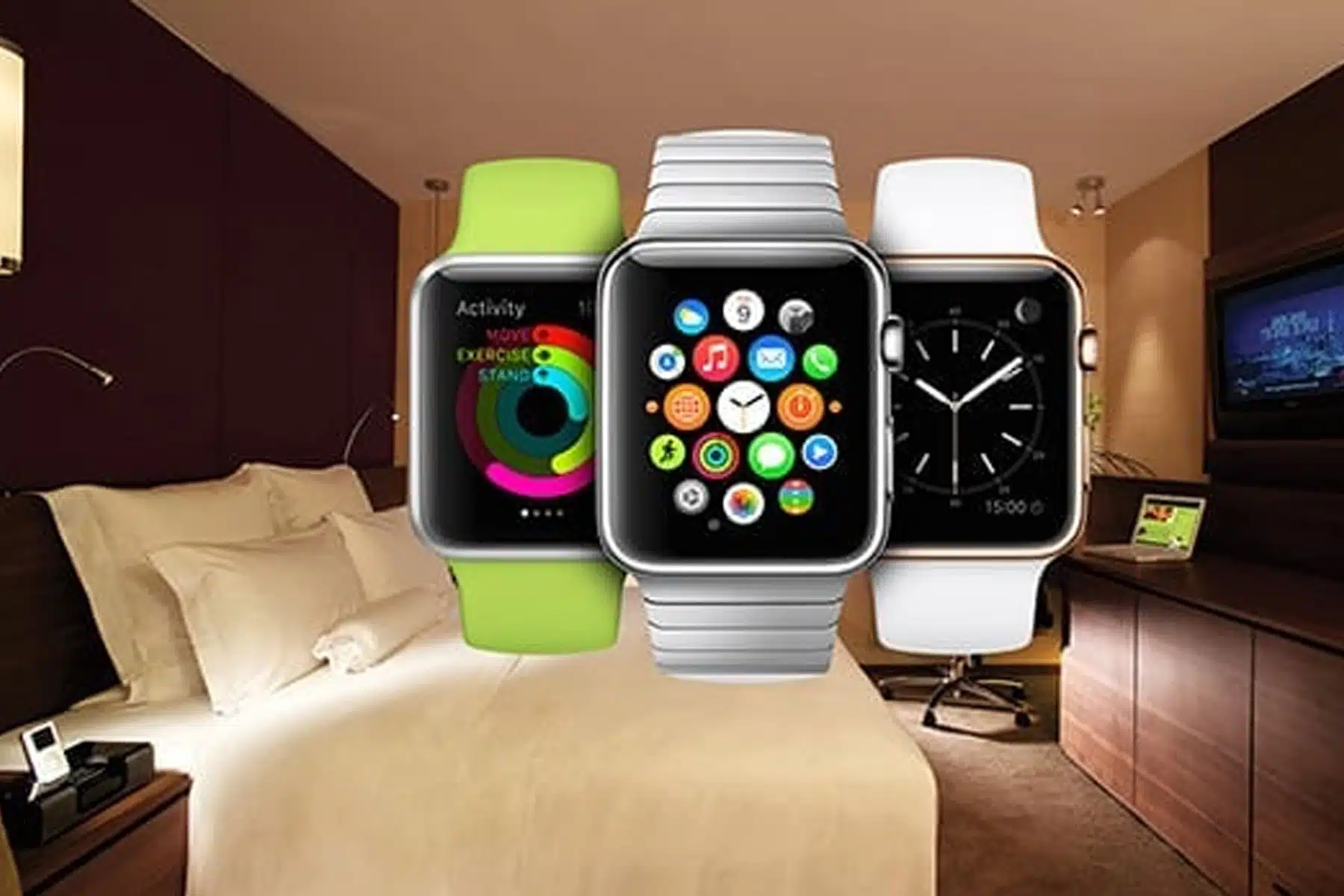If you’re at all interested in technology – whether it is for work or just for fun – you’ll know the future that all the big tech companies are working towards is wearable technology. The release of the Apple Watch last year just goes to show that users are still looking for the next new and exciting piece of tech to own… and now wear. In retrospect, wearable technology is not a new idea. How long have you been wearing a digital watch or used a Bluetooth headset? And while these are examples of technology that you wear, they are distinctly different from what we now know as ‘wearable tech.’ The distinction being that wearable tech interacts with you and your surroundings; from measuring your heart rate to opening your hotel room door.
Why introduce wearable tech into hotels?
Like the introduction of any new technology, a large part of it could well just be a trend. The excitement around the release of this new technology could lessen in the coming years – although many said the same about tablets. In order for new technology to be introduced effectively and adopted throughout brands, it needs to add real value to the guest experience. And wearable technology is slowly showing signs of being able to do so. Wearable technology is a new way to interact and engage with guests and provide them with a new and valued service. It also has the potential to allow staff to provide a more efficient and personalised service to guests.
Wearable technology already in hotels
Ever since the boom of mobile technology, travellers and guests have been turning to their hand-held devices for more and more things. Everything from booking rooms, to ordering room service to, more recently, unlocking their hotel room doors. Starwood Hotels developed a hotel app that uses Bluetooth technology to allow guests to unlock 30,000 of their recently upgraded rooms, across 150 of their hotels – including Starwood’s Aloft, Element and W brands. The Starwood app has since been adapted for smartwatches, offering preferred guests many of the same advantages – such as notifications, ordering items and loyalty programmes. The convenience afforded to guests by having access to hotel services right there on their wrists, can help brands such as Starwood to improve both their guest satisfaction and boost their RevPAR (revenue per available room) through technology. Other hotel brands such as Westin Hotels & Resorts and Walt Disney World Resort have taken a slightly different approach in offering their own specialised devices to guests as they arrive. Westin has been known to lend out sleep-sensing wristbands to aid guests’ well-being, and Walt Disney World Resort now offers guests the ‘MagicBand’ which grants guests access to the theme park and hotel as well as a way to make purchases. Disney can then use the aggregate data from the bands to create a better, more “magical” experience for their guests.
Applications of wearable technology for hotel staff
Many of the benefits of wearable technology have been guest-focused, offering them easier access to apps and information. However some of the real potential value of wearable technology would come when it can be applied to hotel staff – which in turn would enhance the guest experience. Mobile technology – while definitely useful and efficient – is not always practical for every member of the hotel staff.
Maintenance
The reliance of many maintenance and engineering staff on out-dated two-way radios is, in large part, due to the fact that a mobile phone or tablet is just not practical in their work environment. Many a mobile will have been dropped, smashed or stepped on by a maintenance staff member when working on a physically demanding job. Therefore, for staff in those roles the benefits of a hands-free system that they can glance at could be endless. They could receive messages and updates about new and outstanding jobs, update their work orders and even keep a record of time spent on each individual task.
Housekeeping
This is another role in which it is not that practical for hotel staff to carry around mobile devices. With wearable technology, housekeeping staff could receive guest requests, track orders and send updates all from their smartwatch.
Wait Staff
Tablet technology has been fairly universally adopted in the hospitality industry, with reservations and guest lists often created and accessed on a tablet. This is a less practical option for wait staff, especially in high-profile or high-volume outlets, where their role is centred on receiving and delivering orders. A smartwatch could easily display orders and notifications that busy wait staff and bartenders could look at and respond to without being encumbered with a tablet or mobile phone.
Wearable tech to create the ultimate guest experience
Staff-focused wearable technology has as yet not been developed within the hotel industry. However, wearable technology has been experimented with by other travel and tourism industries – most notably with Virgin Atlantic. During a pilot scheme launched last year, concierge staff in Virgin Atlantic’s Upper Class Wing used Google Glass and other wearable tech to assess the improvement to customer service that technology could provide. The results of which led the airline to announce a new partnership with Sony earlier this year to bring its Smartwatch wearable tech to airline staff in an effort to further improve customer service; suggesting that we could see staff-focused wearable tech in the hotel industry sooner than we think. Whether wearable tech is just a trend or becomes the industry norm, it is another way that technology can add to the ultimate guest experience. Guests are looking for ways in which a hotel or hospitality outlet makes them feel unique and special, and increasing the ways in which guests can communicate with a hotel brand is a key way to do that.

